- Clone
- DX27 (See other available formats)
- Regulatory Status
- RUO
- Other Names
- CD158b1 (KIR2DL2, p58.2), CD158b2 (KIR2DL3, p58.3), CD158j (KIR2DS2, p50.2), KIR-NKAT2
- Isotype
- Mouse IgG2a, κ
- Ave. Rating
- Submit a Review
- Product Citations
- publications

-

Human peripheral blood lymphocytes stained with purified DX27, followed by anti-mouse IgG FITC
| Cat # | Size | Price | Quantity Check Availability | Save | ||
|---|---|---|---|---|---|---|
| 312602 | 100 µg | $112 | ||||
CD158b is expressed on natural killer cells and a subset of T cells. It is a member of the immunoglobulin superfamily containing two immunoglobulin C2-type domains. Both variants and alternative isoforms of CD158b have been reported. The interaction of CD158b with specific HLA-C antigens on a target cell (HLA-Cw1, HLA-Cw3, HLA-Cw7 alleles, for example) inhibits cytotoxicity and prevents target cell lysis and death. The interactions between KIR and MHC class I are thought to be important in NK cell and T cell regulation following antigen stimulation. The absence of ligands for KIRs may lower the threshold for activation through activating receptors and increase inflammation and susceptibility to autoimmune disease.
Product DetailsProduct Details
- Verified Reactivity
- Human
- Antibody Type
- Monoclonal
- Host Species
- Mouse
- Formulation
- Phosphate-buffered solution, pH 7.2, containing 0.09% sodium azide.
- Preparation
- The antibody was purified by affinity chromatography.
- Concentration
- 0.5 mg/ml
- Storage & Handling
- The antibody solution should be stored undiluted between 2°C and 8°C.
- Application
-
FC - Quality tested
- Recommended Usage
-
Each lot of this antibody is quality control tested by immunofluorescent staining with flow cytometric analysis. For flow cytometric staining, the suggested use of this reagent is ≤2.0 µg per million cells in 100 µl volume. It is recommended that the reagent be titrated for optimal performance for each application.
- Application Notes
-
The DX27 monoclonal antibody reacts with a common epitope of KIR2DL2 (CD158b1, p58.2), KIR2DL3 (CD158b2, p58.3), and KIR2DS2 (CD158j, p50.2). Additional reported applications (for the relevant formats) include: restoring the NK cell cytotoxicity1,5.
This clone has been tested in-house and determined to not be suitable for applications in immunohistochemistry of paraffin-embedded tissue sections (IHC-P). -
Application References
(PubMed link indicates BioLegend citation) -
- Bakker ABH, et al. 1998. J. Immunol. 160:5239.
- Lucas M, et al. 2003. J. Virol. 77:2251.
- Goodier M, et al. 2000. J. Immunol. 165:139.
- Yawata M, et al. 2002. Immunogenetics 54:543.
- Valiante NM, et al. 1997. Immunity 7:739.
- Product Citations
-
- RRID
-
AB_314933 (BioLegend Cat. No. 312602)
Antigen Details
- Structure
- Immunoglobulin superfamily member, contains two immunoglobulin C2-type domains, type I membrane protein
- Distribution
-
NK cells and a subset of T cells
- Function
- Inhibits cytotoxic function of NK and T cells upon interacting with specific HLA-C antigens on target cell
- Ligand/Receptor
- HLA-C antigens such as HLA-Cw1, HLA-Cw3, HLA-Cw7
- Cell Type
- NK cells, T cells
- Biology Area
- Immunology
- Molecular Family
- CD Molecules
- Antigen References
-
1. Colonna M, et al. 1995. Science 268:405.
2. Uhrburg M, et al. 1997. Immunity 7:753.
3. Wagtmann N, et al. 1995. Immunity 3:801.
4. Dohring C, et al. 1996. Immunogenetics 44:227.
5. Maenaka K, et al. 1999. Structure 7:391. - Gene ID
- 3803 View all products for this Gene ID
- UniProt
- View information about CD158b/j on UniProt.org
Related Pages & Pathways
Pages
Related FAQs
Other Formats
View All CD158b/j Reagents Request Custom Conjugation| Description | Clone | Applications |
|---|---|---|
| Purified anti-human CD158b/j (KIR2DL2/L3/S2) | DX27 | FC |
| FITC anti-human CD158b/j (KIR2DL2/L3/S2) | DX27 | FC |
| PE anti-human CD158b/j (KIR2DL2/L3/S2) | DX27 | FC |
| APC anti-human CD158b/j (KIR2DL2/L3/S2) | DX27 | FC |
| PE/Cyanine7 anti-human CD158b/j (KIR2DL2/L3/S2) | DX27 | FC |
| PerCP/Cyanine5.5 anti-human CD158b/j (KIR2DL2/L3/S2) | DX27 | FC |
| TotalSeq™-A0592 anti-human CD158b/j (KIR2DL2/L3/S2) | DX27 | PG |
| TotalSeq™-B0592 anti-human CD158b/j (KIR2DL2/L3/S2) | DX27 | PG |
| APC/Fire™ 750 anti-human CD158b/j (KIR2DL2/L3/S2) | DX27 | FC |
| TotalSeq™-C0592 anti-human CD158b/j (KIR2DL2/L3/S2) | DX27 | PG |
Customers Also Purchased
Compare Data Across All Formats
This data display is provided for general comparisons between formats.
Your actual data may vary due to variations in samples, target cells, instruments and their settings, staining conditions, and other factors.
If you need assistance with selecting the best format contact our expert technical support team.
-
Purified anti-human CD158b/j (KIR2DL2/L3/S2)

Human peripheral blood lymphocytes stained with purified DX2... -
FITC anti-human CD158b/j (KIR2DL2/L3/S2)
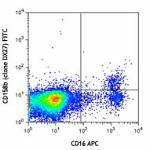
Human peripheral blood lymphocytes were stained with CD158b ... 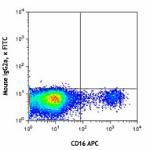
-
PE anti-human CD158b/j (KIR2DL2/L3/S2)
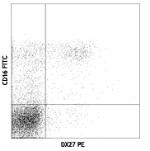
Human peripheral blood lymphocytes stained with DX27 PE and ... -
APC anti-human CD158b/j (KIR2DL2/L3/S2)
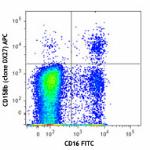
Human peripheral blood lymphocytes were stained with CD16 FI... 
-
PE/Cyanine7 anti-human CD158b/j (KIR2DL2/L3/S2)
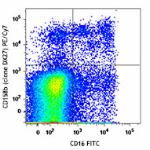
Human peripheral blood lymphocytes were stained with CD16 FI... 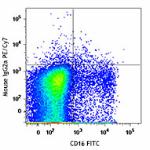
-
PerCP/Cyanine5.5 anti-human CD158b/j (KIR2DL2/L3/S2)

Human peripheral blood lymphocytes were stained with CD56 AP... -
TotalSeq™-A0592 anti-human CD158b/j (KIR2DL2/L3/S2)
-
TotalSeq™-B0592 anti-human CD158b/j (KIR2DL2/L3/S2)
-
APC/Fire™ 750 anti-human CD158b/j (KIR2DL2/L3/S2)

LWB were stained with human CD158b (KIR2DL2/L3, NKAT2) (clon... -
TotalSeq™-C0592 anti-human CD158b/j (KIR2DL2/L3/S2)
 Login/Register
Login/Register 





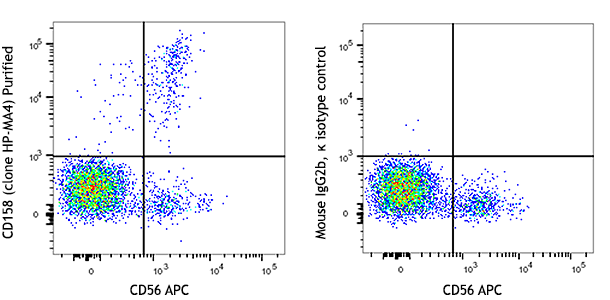
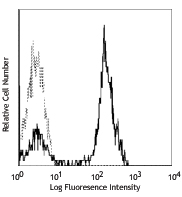





Follow Us